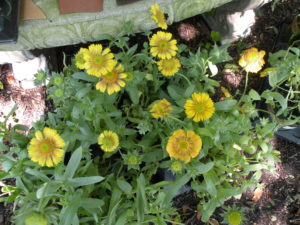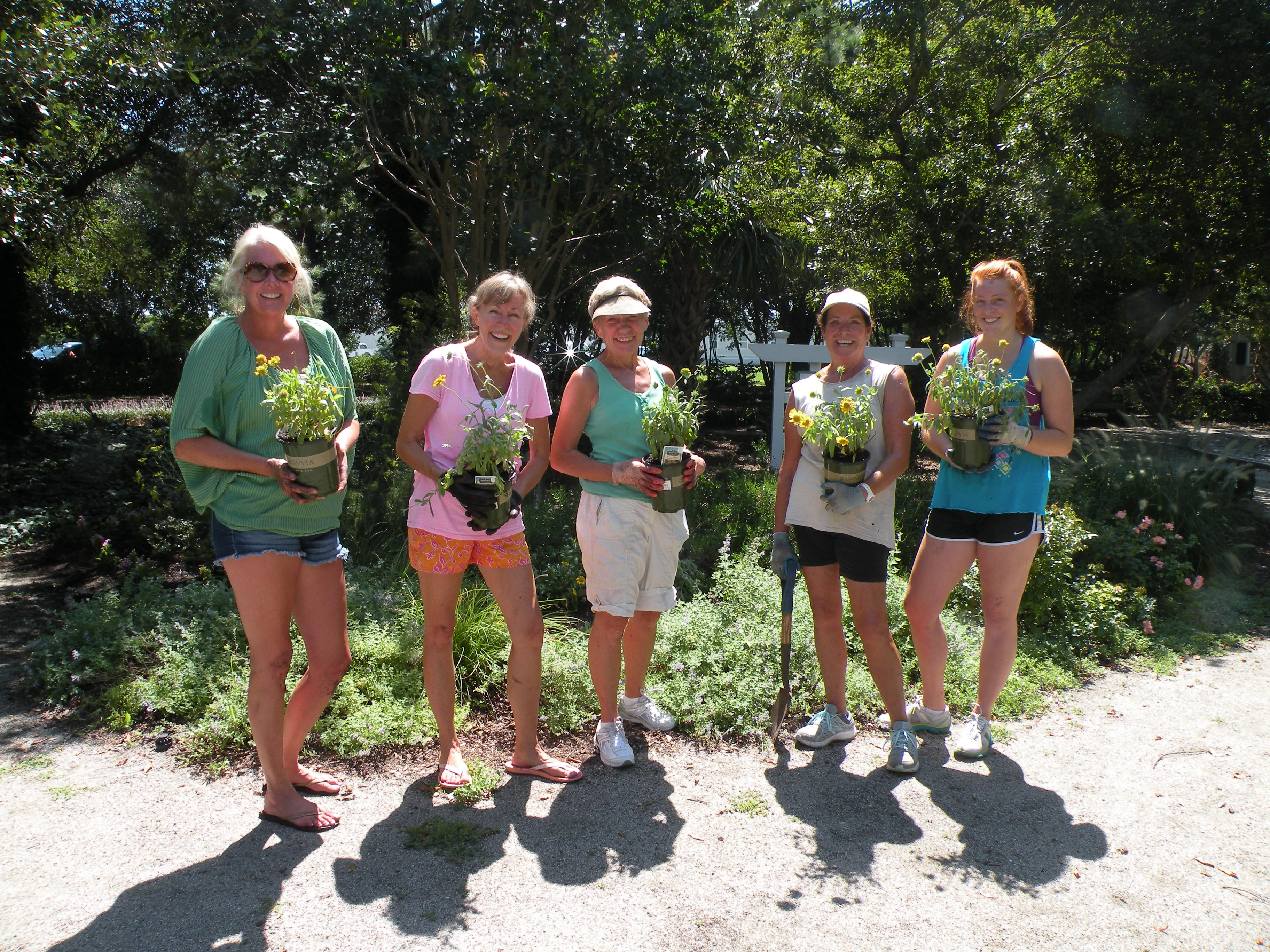By Jana Mackin
Contributing Writer
When Harbor Island Garden Club adopted the Gaillardia as its official flower this summer, they honored a sunny native plant that thrives in sand, salt and drought. Club members had adopted the flower to replace the Tamarisk, an invasive species that was the club’s original flower. Dozens of brightly colored flowers were planted in the perennial beds of Wrightsville Beach’s Harbor Way Gardens, a one-acre oasis of native plants and flowers that attract butterflies, bees and hummingbirds.

“Around here, they are known as Beach Daisies,” said Elise Running, chair person of the Harbor Way Gardens’ Committee. “Some are yellow and some are variegated. They grow wild on the sand dunes and the beach.”
When the club was founded in 1952, the Tamarisk, also known as Tamarix and salt cedar, was its first official flower. However, this flowering shrub was found to be an invasive species.
When the club adopted the new flower, volunteers planted more than 70 Gaillardia plants in the perennial beds of the Harbor Way Gardens, certified as a Wildlife Habitat by the National Wildlife Federation. These plants are part of the gardens designed for people to learn about the native plants and flowers as well as experience potential of what can grow there. The whole point of the perennial garden is to provide habitat for wildlife, said Curt Langdon, horticulturist and main consultant/principle designer of the gardens.
Langdon said three different color Gaillardia plants created from the native for their aesthetics and vibrant colors were planted with the yellow variety doing best, presenting “eye-catching blooms.”
“One man’s weed is another man’s flower,” said Langdon, owner of Outer Space Garden Designs.
Susan Brown, New Hanover County consumer horticulture extension agent, said the native yellow and orange Gaillardia are generally a little taller than the adaptive plants. They have a high drought tolerance and are good pollinators. They are remarkable in how they have not only adapted but learned to thrive in harsh conditions.
“It’s amazing to see these poor little flowers growing on the dunes,” Brown said. “They like poor soil. They like it dry. Too much water and they will die.”
The beauty, tenacity and adaptability of the Gaillardia continues to inspire whether wild on the beach or in gardens, awash in the “colors of the sunset,” Brown said.
“I was inspired by the color and joy it showed. It’s beautiful,” said Fran Russ, club member who wrote a poem honoring the Beach Daisy.”
“It’s courageous,” she said. “It’s courageous for growing in the sand.”
“We all grow in the sand if we live down here.”




